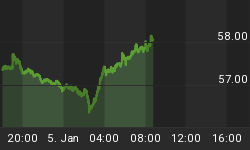Featured Image Source: Christie’s
Artificial intelligence has already made its debut in fashion with models that everyone initially thought were human, and now it’s hit another milestone in the art world: Christie’s just auctioned off its first-ever portrait made by an algorithm--and it sold for more than a Warhol print.
The portrait—Edmond de Belamy, from “La Famille de Belamy” sold for $432,500 ($350,000 plus fees), or more than double the price of two other paintings that went up for auction at the same time: A Warhol print and a piece by Roy Lichtenstein, the New York Times reported.
Christie’s was only hoping to get around $10,000 for the “Belamy” in this gamble on artificial intelligence, but bidders took them by surprise.
The AI painting was produced by Obvious, a French art collective, and Christie’s claims that it was the first algorithm-derived portrait ever up for auction.
It also marks a new and critical point in humanity’s break with … humanity in the art world. As Christie’s notes in its preview, the painting is “not the product of a human mind”. This is algebra, pure and simple.
This break with tradition in the art world is made possible by GAN (Generative Adversarial Networks) technology, created by Ian Goodfellow, the man behind the algorithm.
According to The Art Newspaper, the collector who originally bought the ‘Le Comte de Belamy’ directly from the Obvious collective—Nicolas Laugero-Lasserre—paid 10,000 euros for it and told the publication that the “artists” were “three young guys who know nothing about art, yet they made this tool that makes art. It’s a whole new movement.”
So, it’s an art movement without artists. Or it’s where something like Silicon Valley hijacks the art world.
As Laugero-Lasserre poses: “Are they artists or a start-up”?
The bidders at Christie’s auction don’t seem to care. The art, in this case, is in the novelty of the idea, regardless of whether the figures behind Obvious are businessmen and engineers rather than artists. Related: How Universities Are Fueling Crypto Adoption
And, of course, the novelty isn’t really that novel—but getting an auction at Christie’s takes this to a new level.
As the Art Newspaper points out, it’s also not the first robot-led art movement to have sprouted up. Some four decades ago, a collective that called itself ‘The Algorists’ tried to jump-start such a movement but failed to gain high-level recognition. They were before their time.
One of the first big AI art pieces to have sold was a sculpture by Rafael Lozano-Hemmer in 2015. It went for just under $120,000 and was machine-generated, according to Art News, while another “algorithmic” piece by Philippe Parreno is priced in the neighborhood of $600,000.
In the meantime, Christie’s is fine moving where art demands to be taken—even if that means opening the art doors to non-artists, and turning coders and businessmen into ‘painters’.
“Christie’s continually stays attuned to changes in the art market and how technology can impact the creation and consumption of art,” Richard Lloyd, international head of prints at Christie’s, said in its pre-auction statement.
And with this auction, Christie’s has signaled “the arrival of AI art on the world auction stage”.
By Michael Kern for Safehaven.com
More Top Reads From Safehaven.com:
















